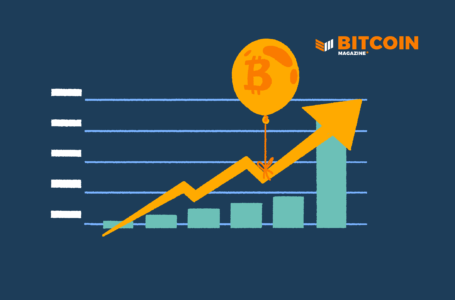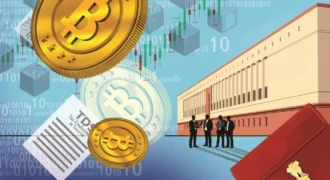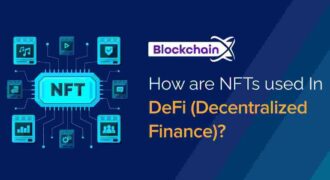For years, Bitcoin has been hailed as digital gold — a modern safe haven in a world of fluctuating currencies and rising inflation. From its inception in 2009, Bitcoin promised a decentralized alternative to traditional money, immune from government control and monetary manipulation. But as inflation surges and global economies wobble, a pressing question arises: Is Bitcoin still the best hedge against inflation — or has that narrative started to crack?
Let’s unpack this complex relationship between Bitcoin and inflation — exploring how it began, how it’s evolving, and whether Bitcoin can still live up to its “inflation hedge” reputation in 2025 and beyond.
💡 Understanding Inflation: The Enemy of Value
Inflation is simple at its core — it’s the gradual decline in the purchasing power of money. When inflation rises, each unit of currency buys fewer goods and services than before. Central banks often try to control inflation through monetary policy, but excessive money printing, supply shocks, and geopolitical turmoil can all push prices up faster than expected.
For decades, investors turned to gold, real estate, and bonds to protect their wealth. These assets historically held value when fiat currencies faltered. But in the 21st century, Bitcoin entered the stage, offering something radically new — a finite, borderless, and decentralized store of value.
🪙 The Birth of the Bitcoin-as-Hedge Narrative
Bitcoin’s inflation-hedge story began with its fixed supply of 21 million coins. Unlike fiat currencies, which can be printed infinitely, Bitcoin’s scarcity is programmed into its code. Every four years, its issuance rate is cut in half through an event known as the Bitcoin halving, making it progressively harder to mine new coins.
This built-in scarcity, combined with its decentralized nature, positioned Bitcoin as a digital alternative to gold — a store of value beyond the reach of central banks or political agendas.
In times of monetary expansion — like during the 2020 pandemic stimulus wave — Bitcoin soared, climbing from under $10,000 to nearly $69,000 in 2021. Investors saw it as a modern hedge against excessive money printing, a digital fortress against inflationary erosion.
But as markets matured, the story became more nuanced.
📉 When Theory Meets Reality: Bitcoin in High-Inflation Environments
The real-world test of Bitcoin’s inflation-hedge thesis came in 2022 and 2023, when inflation surged across the U.S., Europe, and emerging economies. Conventional logic suggested that Bitcoin should shine in such conditions.
Yet, that wasn’t entirely the case. As global inflation climbed to record highs, Bitcoin’s price dropped sharply, falling from its peak near $69,000 to below $20,000. Critics were quick to argue that Bitcoin had failed its inflation-hedge test.
But context matters. Bitcoin didn’t exist in isolation — it was part of a broader market environment dominated by tightening monetary policy, interest rate hikes, and investor risk aversion. When central banks raised rates to curb inflation, speculative assets — from tech stocks to cryptocurrencies — suffered equally.
In short: Bitcoin’s volatility overshadowed its role as an inflation hedge in the short term.
🔍 The Long-Term Case for Bitcoin as a Hedge
While Bitcoin may not always protect investors during short-term inflation spikes, its long-term fundamentals still align with the principles of an inflation-resistant asset.
1. Scarcity in a World of Abundance
In an era where fiat currencies can be created with a keystroke, Bitcoin’s hard cap of 21 million coins remains a powerful narrative. Its supply schedule is transparent and predictable — a stark contrast to central banks’ monetary flexibility.
2. Global and Borderless
Bitcoin isn’t bound by any country’s economy. Whether inflation spikes in Argentina, Turkey, or the U.S., Bitcoin offers a globally accessible store of value that transcends borders. In many inflation-hit nations, citizens already use Bitcoin or stablecoins as a lifeline to preserve wealth.
3. Censorship Resistance and Control
In times of crisis, governments often impose capital controls, restrict foreign exchange, or freeze bank accounts. Bitcoin, as a decentralized network, resists such measures, giving individuals financial sovereignty when traditional systems falter.
4. Correlations Are Evolving
Historically, Bitcoin traded more like a risk asset (similar to tech stocks) than a defensive one. However, as institutional adoption grows and Bitcoin ETFs enter mainstream markets, its correlation with traditional equities could decrease over time — reinforcing its hedge potential.
⚠️ The Caveats: Bitcoin Isn’t a Perfect Hedge
While Bitcoin’s long-term characteristics are inflation-resistant, investors must recognize its limitations as a traditional hedge:
- Volatility: Bitcoin’s price swings can reach double-digit percentages in a single day — not ideal for risk-averse investors seeking stability.
- Speculative Sentiment: Market hype, regulatory news, and macroeconomic conditions heavily influence Bitcoin’s short-term price movements.
- Adoption Gaps: While institutional adoption is growing, Bitcoin’s everyday use as a stable store of value still lags behind.
- Energy and Regulation: Ongoing debates around energy consumption and crypto regulation can impact investor confidence and price stability.
Thus, while Bitcoin’s fundamentals support its inflation-hedge role, its execution depends on time horizons, market maturity, and investor expectations.
🌍 Bitcoin in Emerging Economies: A Real-World Hedge
Where Bitcoin truly shines is in regions experiencing chronic inflation and currency devaluation.
In countries like Venezuela, Nigeria, Argentina, and Zimbabwe, citizens have adopted Bitcoin as a lifeline — a way to store value, send remittances, and escape currency collapse. In these cases, Bitcoin functions exactly as intended: a decentralized shield against inflation and monetary instability.
In Africa, for instance, rising inflation and limited banking access have made Bitcoin an alternative financial system. Platforms like Bitget, Binance, and LocalBitcoins have seen surges in peer-to-peer activity as people seek stability in a volatile economic climate.
So while Bitcoin may not hedge inflation perfectly in Wall Street portfolios, it’s already serving that purpose for millions worldwide.
🧭 The Evolving Role of Bitcoin: From Speculation to Store of Value
Bitcoin’s journey mirrors that of gold in its early days — dismissed, volatile, and misunderstood, before eventually earning its place as a trusted asset.
As the crypto market matures, Bitcoin is evolving from a speculative instrument into a macroeconomic asset class — used by institutions, countries, and individuals alike. The introduction of Bitcoin ETFs, the growth of Lightning Network transactions, and corporate adoption all contribute to its stability and legitimacy.
In the long run, Bitcoin’s fixed supply and decentralized nature could make it the ultimate inflation-resistant asset — not because it reacts immediately to inflation data, but because it operates outside the system that causes inflation in the first place.
🔮 Final Thoughts
So, is Bitcoin still the best hedge against inflation? The answer depends on perspective.
- In the short term, Bitcoin behaves more like a high-risk asset than a stable store of value.
- In the long term, its scarcity, independence, and borderless design make it uniquely positioned as a hedge against the failures of fiat systems.
Bitcoin’s power lies not in daily price movements, but in its principles — finite supply, decentralization, and freedom from monetary control. As global economies grapple with inflation, those principles remain more relevant than ever.
Bitcoin may not yet be a perfect hedge, but it’s undeniably the most revolutionary one humanity has ever created.










